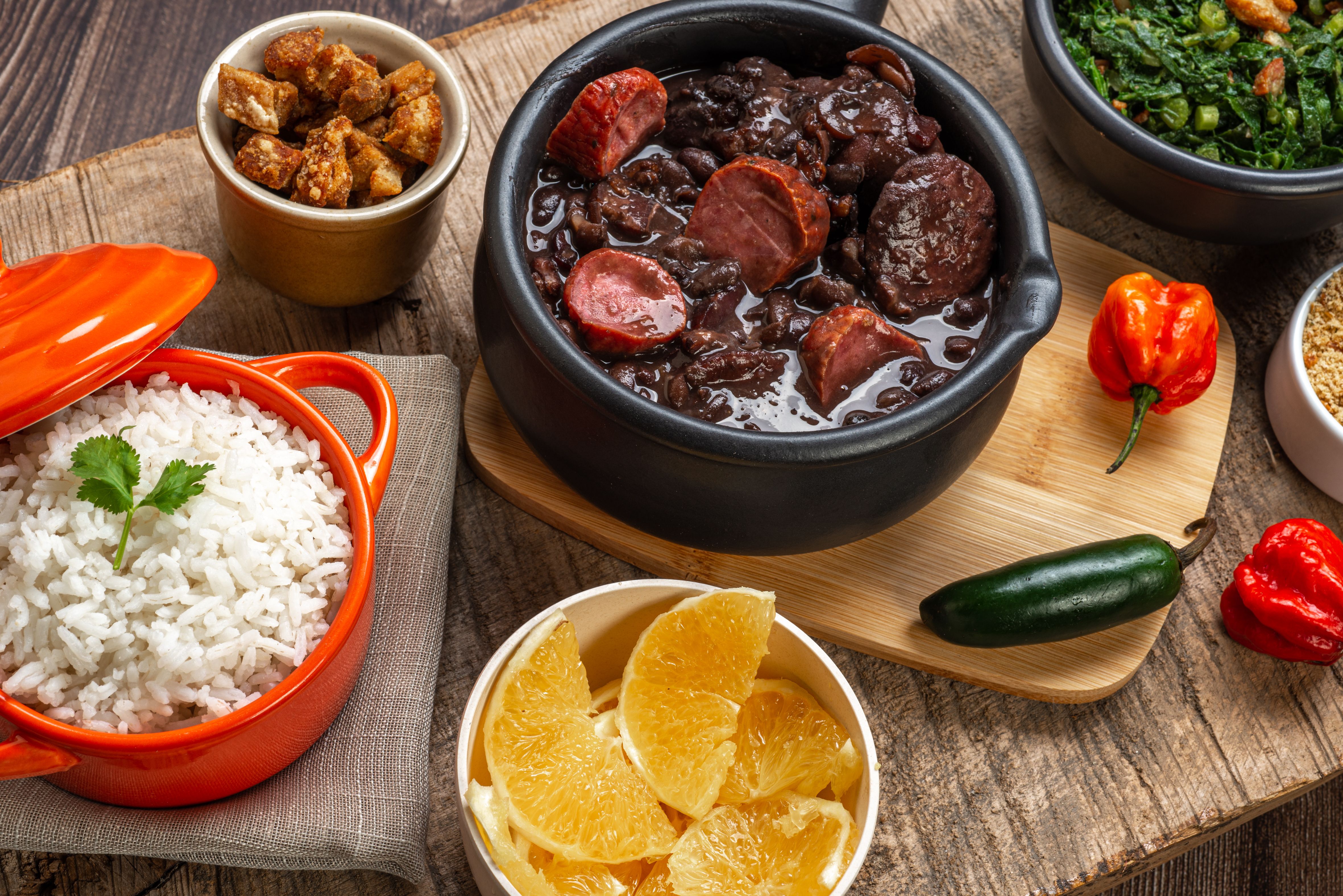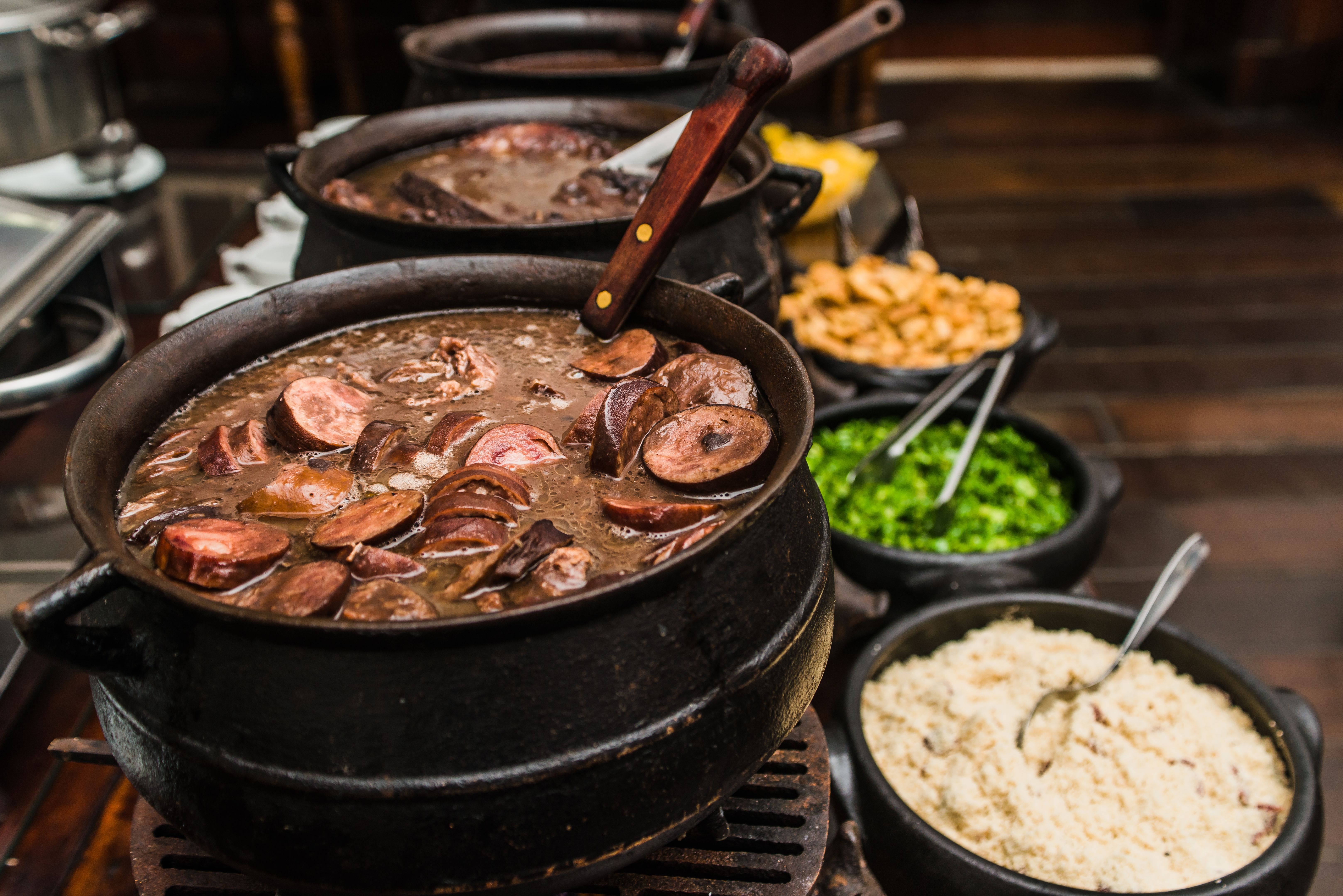Exploring Feijoada: Brazil's Iconic Black Bean Stew
Introduction to Feijoada
Feijoada is not just a dish; it's a cultural emblem of Brazil, celebrated for its rich flavors and communal nature. This iconic black bean stew is traditionally enjoyed on weekends, often bringing friends and families together for a hearty meal. The dish's name is derived from "feijão," which means beans in Portuguese, the primary ingredient of this beloved stew.
Initially popularized by African slaves in Brazil, feijoada has evolved over centuries, absorbing influences from various parts of the country. It's a dish that tells the story of resilience and cultural fusion, making it much more than just a meal.

Ingredients and Preparation
At its core, feijoada consists of black beans slow-cooked with a variety of salted pork or beef products. Ingredients often include pork belly, chorizo, ribs, and sometimes cuts like ears and feet. The stew is seasoned with bay leaves, garlic, onions, and sometimes a touch of orange for acidity.
Preparing feijoada can be an all-day affair, as the flavors meld to create a deeply satisfying and complex taste. Though there are many regional variations, the essence remains the same: a celebration of diverse ingredients coming together in harmony.
Accompaniments and Serving
A traditional feast wouldn't be complete without the perfect accompaniments. Feijoada is typically served with white rice, collard greens sautéed with garlic, and orange slices to cut through the dish's richness. Farofa, a toasted cassava flour mixture, adds a delightful crunch.

Many Brazilians also enjoy pairing their feijoada with a refreshing caipirinha, Brazil's national cocktail made with cachaça, sugar, and lime. This drink complements the hearty flavors of the stew perfectly.
Regional Variations
While feijoada is widely enjoyed across Brazil, each region adds its own unique twist to the recipe. In Rio de Janeiro, for instance, the dish may include additional meats like carne seca (dried beef), while in São Paulo, it's common to find feijoada served with fried bananas.
In the northeastern state of Bahia, African influences are more pronounced, often incorporating dendê oil for added depth. This diversity highlights how regional cultures have shaped feijoada into a dish that reflects Brazil's vast culinary landscape.

The Social Aspect of Feijoada
Feijoada is more than just food; it's an experience meant to be shared. The tradition of gathering around a table to enjoy this dish fosters a sense of community and warmth. Whether it's a family gathering or a celebration with friends, feijoada serves as a reminder of the joy found in shared meals.
Many restaurants across Brazil host special feijoada days, often on Wednesdays and Saturdays, inviting patrons to indulge in this culinary delight. These events are not just about eating but also about connecting with others through food.
Conclusion: A Taste of Brazil
Exploring feijoada offers a glimpse into Brazil's vibrant culture and history. It's a dish that encapsulates the spirit of the nation, combining diverse ingredients into a cohesive and flavorful whole. Whether you're enjoying it in a bustling Brazilian city or trying your hand at making it at home, feijoada promises a truly unforgettable culinary experience.
If you ever find yourself in Brazil, make sure to partake in this beloved tradition. Until then, consider recreating this iconic stew in your own kitchen for a taste of Brazil's culinary heritage right at home.
